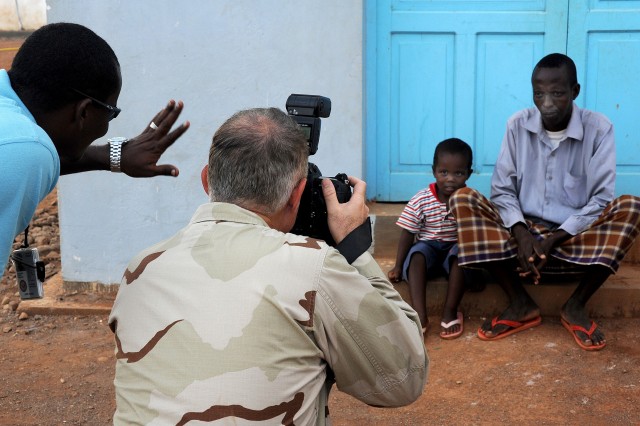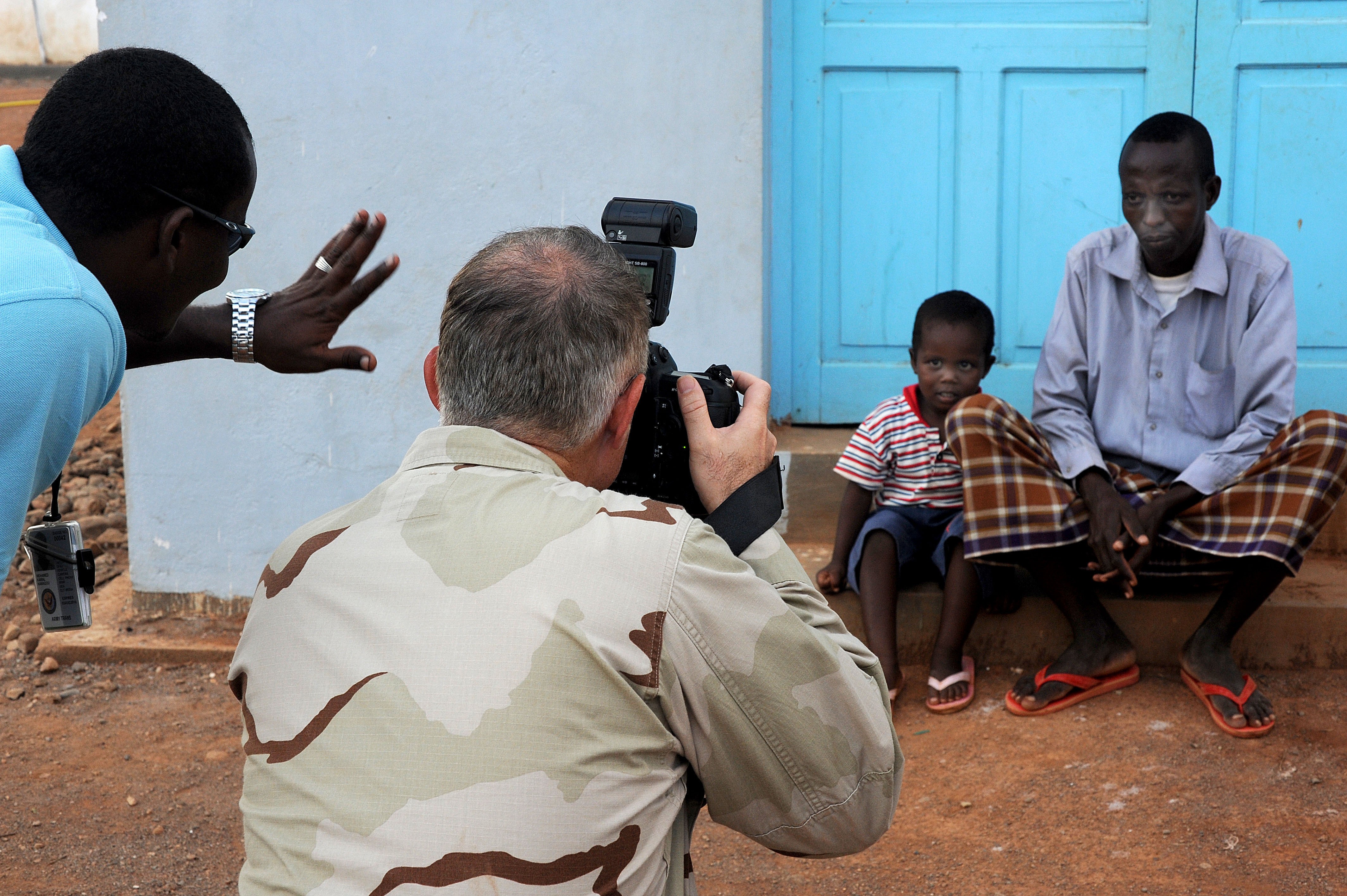ALI OUNE, Djibouti - Civil Affairs teams from the 478 and 418 Battalion, accompanied by other U.S. servicemembers, Combined Joint Task Force - Horn of Africa, left a lasting impression on local residents of Alioune, Djibouti through a new photo project, May 9, 2010.
Through this project, residents had their photos taken, which were then printed on site with a battery-powered, high-quality printer, and presented on photo paper with a goodwill message on the backside--all within a few moments of it being taken.
No one knew exactly how the people would respond. Although Civil Affairs teams have built a rapport with the village, the scheduled visit was originally focused on Movie Night--a time to watch an American-made, action movie powered by a generator. The photography started while the movie projector was being set up and members of the Civil Affairs team played soccer with the Djiboutians.
At first they were hesitant," said U.S. Army Staff Sergeant Wayne Teegardin, 478 CA team sergeant. "They are scared that taking that photo means we might take that person away."
With the help of an interpreter and Village Chief Djama Said Guedi, the first picture was taken. Moments later, the photo was handed to the chief. More than 100 children and their parents watched in wonder to see what was going on. More photos were printed of families.
According to Guedi, the people's main method of seeing what they look like is the identification cards they have as Djibouti citizens. This is the first visual record. "Ali Oune has no mirrors," he explained. "The photos make the village feel better. It is like having a soccer game or a movie night. It's a good thing for the village. It reunites them."
The expressions and mood of many of the Ali Oune residents turned noticeably from wonder to excitement. Within an hour, dozens of families and children received photographs, each with a sticker of the U.S. and Djibouti flags side-by-side on the back.
"It gives them a keepsake. It gives them something back," said U.S. Army Major Michael Guiles, CA team leader for Charlie Company, 418 Battalion. "I explained to the headmaster of the school, that it's something we do in America. We take pictures of our kids. That way we have a memory of our children as they grow up...when you can give somebody something back that's immediate, that's a nice relationship builder. It opens up new avenues of communication. A picture's worth a thousand words," Guiles said.
As dusk settled in, the villagers gathered in one of their few buildings--an open room with tables and chairs--to watch Ninja Assassin on the wall.
Ultimately the action in Ninja Assassin was unable to defeat the new photos. The normally packed movie room lost the majority of its audience, who chose to watch the printer and get their photos instead. They returned to the movie when it became too dark to continue printing.
"I know what a photograph means to me when I have one taken of my family or myself, so I figured this has to really mean something to these people who may have never even seen a camera before, or a photo of themselves," said U.S. Navy Petty Officer 1st Class Larry Foos, who introduced the program. "With this new portable technology, I thought it might be a great way to give them something they'll hold onto for years, and help them remember we're their friends. Maybe that'll help them not be swayed to thinking something else as they grow older."
The 478 and 418 Civil Affairs Battalions are attached to Combined Joint Task Force-Horn of Africa, which has an overall mission to help East African countries improve their stability and increase their security. The U.S. Command works in partnership with the U.S. Embassy and U.S. Agency for International Development to Djibouti to assist in health and education.
Situated less than 10 miles from the Somalian border, the village is made up of about 500 Somalian and Ethiopian nomad people, who originated from the nearby mountain ranges. They settled in Ali One about eight years ago with the discovery of water. The buildings were added in 2008. The village is about 15 miles from Camp Lemonnier, home to CJTF-HOA, making it an important place to build relations, especially because it is near the porous border of Somalia.
It is believed the on-location photos will go a long way to building long term relationships and shaping the attitudes of the people--at least in Ali Oune. The program is considered a success and the 418 CA Team plans to acquire more printers and expand the program.




Social Sharing